Tag: exercises
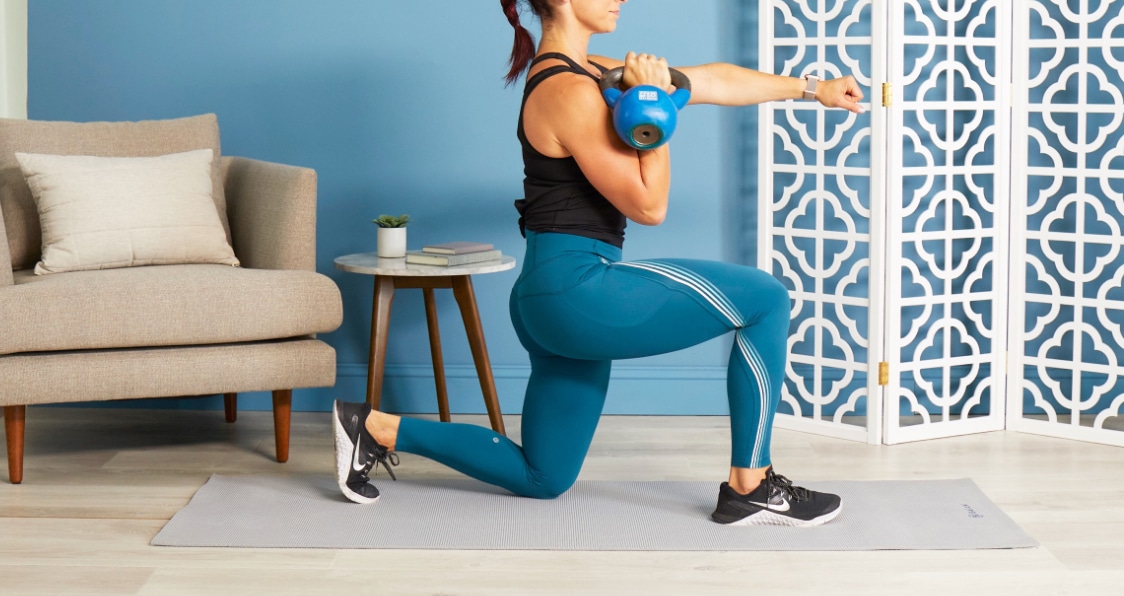
7 Kettlebell Exercises For a Nice Butt
Kettlebell exercises can help build up many areas!
Kettlebells are all the rage these days. Many people consider kettlebell exercises to have better functional value than dumbbells, and for that reason, it is drawing a cult following. Heck, we even have kettlebells that look like chimps, orangutans, Bigfoot, and even Darth Vader.
While kettlebells provide the convenient size and portability of a dumbbell, they have a unique impact on your muscles. The spherical weight of a kettlebell can be anywhere between six to eight inches from your hands, which adds an unparalleled challenge for core stability and stabilizer muscles.
Kettlebell exercises usually involve several muscle groups at once, making them a potent compound lift-focused training tool. The versatile tool that they are, kettlebells can be used for a variety of exercises that improve both your strength and cardiovascular fitness.
Check Out: Best Kettlebells For Durability & Versatility (Updated 2021)
Origin of The Kettlebell
Before we get to the exercises which will transform your rear forever, let us talk about how the weird-looking training equipment came to be.
Kettlebells were developed by Russian strongmen in the 1700s.
Interestingly, in the 18th century, the girya (as the kettlebells are called in Russia) were primarily used to weight crops until some burly Russians started lifting them for building strength and endurance.
Russians and their awkward inventions, right?
The cannonball resembling training equipment began to be used for recreational and competition strength athletics in Russia and Europe in the late 19th century.
Trivia: The English term kettlebell has been in use since the early 20th century.
Kettlebells are usually made of iron or steel and are sometimes covered in colorful vinyl with a comfortable handle grip.
Must Read: The Most Effective Compound Exercises For All Levels of Experience
Benefits of Kettlebell Training
So, you are wondering why bother with the kettlebells and not just use dumbbells instead? Here are the benefits of using kettlebells in your workouts:
1. Helps Develop Explosive Hip Strength and Speed
You cannot go wrong with kettlebells if your goal is to build explosive hip strength. Don’t worry. We won’t ask you what you need the explosive hip strength for in the first place.
Kettlebell swings are one of the most common and effective kettlebell exercises. They are also efficient at training your glutes for strength and speed.
But why is hip strength so important, you ask?
Hip strength can help improve your overall stability and can prevent injuries. Also, hip strength and speed play an important role in many athletic movements, such as jumping, sprinting, and squatting.
Related: Fifteen Essential Lower Body Exercises To Add To Your Training
2. Improves Core Strength and Stability
Most kettlebell movements are a form of ballistic training. Ballistic training improves explosive power by maximizing acceleration and minimizing deceleration. These explosive lifts activate the abdominal muscles and require core contraction and coordinated breathing. This process results in an improvement in core strength.
On top of this, kettlebell exercises are multiplanar, meaning – you will be training your core from all directions. It helps with building overall core strength.
3. Increases Range of Motion
Most kettlebell exercises are compound movements that require you to move through multiple planes of motion. Explosive movements through these planes, over time, results in improved flexibility, mobility, and as a result – a better range of motion.
Related: Full Range Of Motion Vs Partials: Which Is The Way To Go?
4. A Total Body Conditioning Tool
Don’t let the little friendly-looking weight training equipment fool you. They can cause total body annihilating in no time. Maybe there is a reason why some brands make them in the Primal shape.
Kettlebells are great at all the four aspects of fitness – strength, endurance, flexibility, and balance training. No matter how packed your schedule, you can always fit a 20-minute kettlebell routine into your day. The best part? You do not need to hit the gym to complete a kettlebell circuit, you could do it from the comfort of your living room or your garage.
Next Read: At Home Workouts With A Single Kettlebell
5. Facilitates Fat Torching Workouts
Kettlebell training circuits are nothing less than fat-burning fests. According to a study, swinging a kettlebell burns as many as 20 calories per minute. For people too lazy to do the math, that’s 400 calories for a 20-minute workout.
Better yet, kettlebell training often results in EPOC (express post-exercise oxygen consumption). Before you freak out – this is a good thing. It means that you would still be burning calories throughout the day after you are done with your kettlebell workout.
6. Improves Balance
Unlike while training with machines, you need to control your movement path while working with kettlebells. Since kettlebell movements have no predetermined movement paths, it requires your stabilizers to work extra hard, and over time results in their strengthening and improvement in overall body balance.
7. Develops a Stronger Posterior Chain and Improves Posture
Most kettlebell exercises are great for your posterior chain as they target your entire backside. Ballistic exercises like Kettlebell Swings help develop explosive strength in your glutes, hamstrings, lower and middle back, and traps.
Your newfound posterior chain strength will aid in jumping higher, running faster, and kicking harder. Not to mention, strong posterior muscles result in a better posture. Goodbye, slouching.
Must Read: Improve Hip Mobility to Boost Lower Body Power
8. Improves Muscles Imbalances
Since many of the kettlebell exercises involve unilateral movements, they help nail down muscle weakness and imbalances. While performing a kettlebell exercise, you might notice that your right side is weaker than the left on a specific lift.
With this information, you can re-design your training program to fix these discrepancies. If you have been training with barbells and machines for a long time, add kettlebell training to your regimen, and you will notice an improvement in muscle imbalances and symmetry.
Check Out: The Benefits Of Unilateral Training & Why It Matters
9. Enhances Muscle Coordination
Unlike the linear movement pattern of barbells and machines, the dynamic nature of kettlebell training forces you to focus on the movement and have a sharp mind-muscle connection. This leads to improved muscle coordination.
Read: 6 Ways To Improve Your Mind-Muscle Connection
10. Builds Lean Muscle Mass
Although kettlebell training alone does not build crazy muscle mass, it increases the amount of lean muscle tissue. If you are a fan of ripped physiques, kettlebell workouts can help you achieve the conditioning you are after.
Not only does kettlebell training help build lean muscle mass, but it also helps in staying agile, athletic and improves mobility, flexibility, and range of motion. What else could you ask for?
7 Kettlebell Exercises For a Pear Shaped Rear
Contrary to popular opinion, you do not need barbells and dumbbells to build shredded wheels. The cannonball with handles is quite a powerful tool when it comes to building strength, conditioning, and mobility. So, grab a kettlebell and start carving legs that Greek gods would approve.
1. Kettlebell Goblet Squat
[embedded content]
Goblet squat is one of the most versatile kettlebell leg-building exercises. Holding a kettlebell in front of your chest allows you to squat deep while minimizing the risk of an injury. Goblet squat also activates the highest number of muscle fibers in your glutes because you are holding the weight in the front and are hinging and leaning slightly forward.
Steps:
Stand upright with a shoulder-width stance, and your toes pointed slightly outwards.
Hold a heavy dumbbell (as per your strength level) in front of your chest. You could either hold the kettlebell upside down or hold the horns with both your hands.
Pull your elbows in towards your sides and maintain this position throughout the exercise.
While keeping your chest lifted, squat down as deep as you can comfortably.
The kettlebell and your arms should stay inside of your legs and close to your body at all times.
Return to the starting position explosively.
Pause and contract your glutes at the top of the movement.
Repeat for recommended repetitions.
Related: How to Perfect the Goblet Squat
2. Kettlebell Swing
[embedded content]
Kettlebell swings are a popular cannonball exercise. It is an incredibly effective exercise for building hip power and explosiveness. This high-intensity exercise will also help burn off excess body fat.
Steps:
Hold a kettlebell with both hands by the flat, top handle.
Stand with a slightly wider than shoulder-width stance and let the kettlebell hang between your legs.
At the starting position, keep your torso upright and brace your core.
Bend at your knees as you push your glutes back, and lower the kettlebell straight towards the floor.
Keep your arms straight and elbows locked out throughout the movement.
Thrust your hips forward explosively and raise the kettlebell until your arms are parallel to the floor.
Squeeze your glutes, core, and quads at the top of the movement.
Hinge forward at your hips and push your butt back again, letting the bell drop on its own as you do.
Keep a neutral spine throughout the exercise.
Repeat for reps.
3. Bulgarian Split-Squat with Kettlebell (in racked position)
[embedded content]
Kettlebell Bulgarian split-squat will set your glutes and hamstrings on fire. The racked position (in front of your chest) will help strengthen your core and stabilizers.
Steps:
Grab a kettlebell in your right hand and hold it in front of your chest.
Drape your left foot on a flat bench as you firmly plant the right on the floor.
Make sure your right foot is out far enough so that when you lower your hips, your knee stays directly over your ankle.
Bend your right knee and lower your body until your left knee is a few inches off the floor.
Return to the starting position explosively and squeeze the life out of your right hamstring and glute.
Complete the recommended reps on the right side before switching sides.
4. Overhead Kettlebell Lunge
[embedded content]
This is probably the hardest exercise on the list. Overhead lunge forces your glutes and hamstrings to work on full throttle to stabilize the lunge. It also requires good shoulder and traps strength and stability.
Steps:
Grab a kettlebell in one hand and press it overhead. Keep your arm straight and elbow locked out throughout the exercise. Your overhead arm should be perpendicular to the floor for the entire duration of the lift.
Drop into a reverse-lunge by extending the leg opposite to the arm holding the weight.
Bend your rear knee and lower your body until your knee is a few inches off the floor.
Push with your rear foot and return to the starting position explosively.
Complete the recommended reps on one leg before switching sides.
5. Single-Arm Racked Curtsy Lunge
[embedded content]
You probably have seen the curtsy lunges on Instagram. Confused? These are a #FitGirl favorite, and hey, we are not complaining. Curtsy lunges are a god-send for glute development.
Steps:
Stand with your feet shoulder-width apart and your left hand on your left hip.
Hold a kettlebell in your right hand in the racked position at your shoulder. Let the cannonball rest on your shoulder for the duration of the exercise.
Step your left foot diagonally behind you and lower your left knee until it almost touches the floor.
Your right knee should bend to about 90-degrees at the bottom of the movement.
Drive through your right heel to return to the starting position.
Pause and squeeze the life out of your glutes and hams at the top of the movement.
Do all your reps on one leg before switching sides.
6. Single-Leg Kettlebell Deadlift
[embedded content]
Single-leg kettlebell deadlift is an incredibly effective kettlebell exercise for isolating your glutes.
Steps:
Hold a kettlebell in your right hand, and lift your left foot slightly off the ground.
While keeping your back and head neutral, lean forward by hinging at your hips.
Raise your left leg off the floor slowly while keeping it in line with your body.
Lower the kettlebell until it almost touches the floor.
Keep your left shoulder blade pulled down your back.
Slowly return to the starting position, and contract your glutes. Make the most of the move by keeping your rear foot off the floor as you go through the reps.
Repeat for recommended repetitions before switching sides.
7. Kettlebell Squat and Clean
[embedded content]
There is some learning curve to this exercise. Make sure you are not going too easy on yourself by using lighters kettlebells. Use a weight that puts a strain on your glutes from the first rep.
Steps:
Stand with an upright torso and your feet placed shoulder-width apart.
Bend at your knees and push your hips back to lower yourself and grab a kettlebell with both hands by the top of the handle.
Drive through your heels to stand up as you pull the weight up to your chest.
During the upward movement, quickly swap your hands from the handles to the cannonball.
Lower into a squat, shifting your weight into your heels and pushing your hips back as you bend your knees.
Drive your body up explosively and squeeze your glutes at the top of the movement.
Reverse the movement by switching your hands back to the kettlebell handle and lowering the weight back down to the floor, bending your knees and pushing your hips back to keep your spine straight.
Repeat for recommended repetitions.
Conclusion
You could perform all these exercises in a single leg workout or use some of them in separate routines to make the most of your glute training. After you see the results, kettlebells will become an indispensable part of your leg training regimen.
Which is your favorite kettlebell exercise? Let us know in the comments below. Also, be sure to follow Generation Iron on Facebook, Twitter, and Instagram.
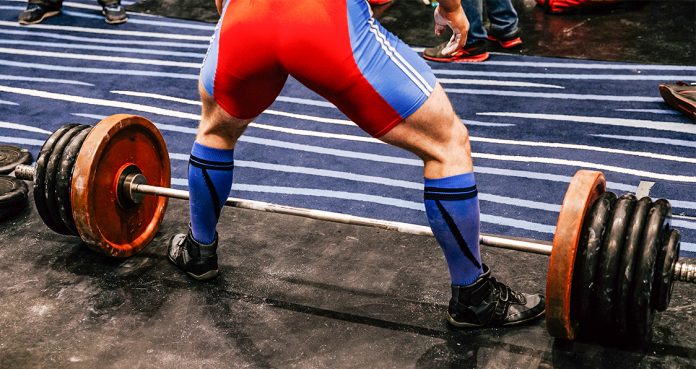
The 6 Best Strength Building Exercises You’re Not Doing
6 Greatest Exercises To Build Strength
With the advancement and mainstreaming of machines in the gyms around the world, people tend to stick to exercises they’re comfortable doing. The sad news is, strength gains lie outside your comfort zone.
If you want to improve on your strength, you’ll have to give up the isolation exercises for compound (multi-joint) lifts. Performing the exercises mentioned in the article will take your strength gains to a whole new level.
Clean and Press
When was the last time you performed the clean and presses or saw someone perform then in your gym? Lifting weights off the floor and over your head is a badass way of putting your brute strength at the display.
The clean and press consist of two main movements. The first part entails lifting the barbell off the floor and to your shoulder level. In the second movement, you need to push the weight overhead. Return to the starting position with a slow and controlled movement, and repeat for the recommended reps.
Deadlifts
Many people prefer using machines or doing rowing exercises in place of the deadlifts for convenience. The deadlifts should be a staple in your back workouts. An effective back workout should be as brutal (if not more) as an annihilating leg workout.
The deadlifts are a full-body exercise and are fantastic for building overall strength. Keep your chest up, back arched, and drive through the heels, knees, and hips to move the weight upward.
Farmer’s Walk
There’s a reason why the farmer’s walk (or a similar exercise) is a part of almost every strongman meet. Walking around while holding onto heavyweights will not only improve your strength but will also help in putting on muscle mass.
Set a one-minute timer and grab the heaviest pair of dumbbells you can find. You can add variations to the farmer’s walk by using a barbell or weight plates in place of the dumbbells.
Bench Press
The bench press is one of the best exercises to improve your pushing strength. The exercise can also help in developing your pectoral muscle size. With all the exercises listed in the article, your priority should be to learn the correct form of doing them rather than going after the heavier weights.
Keep your elbows pointing inwards while performing the bench press to reduce the chances of an injury. Most people expose themselves to a pec or shoulder blade tear by flaring out their elbows too wide.
Rack Pulls
The rack pulls are an incredibly effective but underutilized lift. The rack pulls are a modified version of the deadlifts where the bottom half of the movement is omitted. Lifting the barbell with a limited range of motion will put all the tension on your lats and will help in building strength.
While performing the exercise, most people make the mistake of bouncing the barbell off the rack. By using the momentum you’re leaving gains on the table by reducing the already limited range of motion of the lift.
Squats
Squats shouldn’t come as a surprise on this list. The big 3’s – deadlifts, bench press, and squats – are the compound exercises you shouldn’t skip at any cost if your goal is to build strength and muscle mass.
If you’re a beginner, start by performing easier versions of the exercises like the smith machine squats or dumbbell deadlifts and gradually progress onto the advanced versions with heavier weights.
Who is your favorite exercise? Let us know in the comments below. Also, be sure to follow Generation Iron on Facebook and Twitter.
*Header image courtesy of Envato Elements.
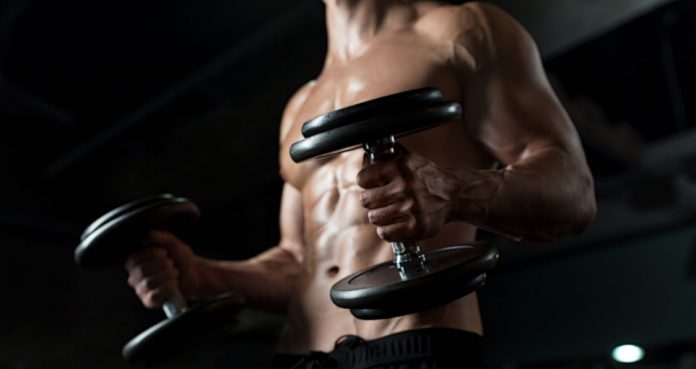
6 Best Conditioning Finishers You Should Be Doing At The End of Your Workouts
6 Best Conditioning Finishers For Definition
Have you ever wondered why your muscles don’t look as striated as the guys on Instagram? It’s because the pros do things differently, and we’ll be letting you in on their secrets today.
If you leave the gym without sore muscles, you’re leaving gains on the table. Your muscles should be filled with blood and lactic acids by the end of your workouts. Performing the six exercises at the end of your workouts will make your muscles scream for mercy.
Leg Extensions
Most people perform the leg extensions at the beginning of their leg workouts. You should prefer doing isolation exercises as your finishers for better pumps as compared to the compound lifts.
Keep the reps slow and controlled and focus on squeezing your quads. Posing and flexing your muscles between sets can help in amplifying the pumps and improving the mind-muscle connection.
Cable Crossovers
Cable crossovers are an incredibly effective chest exercise. If you want to improve your inner pecs and want more striations, cable crossovers should be a part of your exercise arsenal.
If you want a nastier pump, pause at the top of the movement and squeeze your muscles. You can add variation in the exercise by adjusting the height of the pulley. Setting the pulley at your chest height will target your mid-pecs and high pulley will work your lower chest.
Cable Ground Pulley
It can be relatively hard to achieve a pump in the back. While the deadlifts and barbell rows can be great to build size in the back, you need isolation exercises to build definition and conditioning.
Some people make the mistake of swinging back and forth while performing the exercise. Using momentum can take off the tension from your back and put it on the secondary muscles like your arms and shoulders.
Machine Preacher Curls
Arnold Schwarzenegger helped put the bicep peak on the front cover of magazines. It was not late after that people started comparing biceps with mountain peaks. Developing the bicep peaks requires following a full range of motion.
If you don’t have access to a preacher curl machine at your gym, you can use a preacher bench and place it in front of a cable pulley. If you don’t have a preacher bench, use an incline bench, and if you don’t have an incline bench, find a new gym.
Ground Skullcrushers
The ground skullcrushers are one of the most underutilized exercises. While performing the lift, you need to lower the weights until they hit the floor. Keep your lower arms parallel to each other and perpendicular to the floor. Keep your elbows locked at an angle so they are slightly behind your head.
You could use a barbell or dumbbells to perform the exercise. Using the dumbbells will give you a better range of motion which can result in a better pump if you perform the lift with the right form.
Cable Side-Lateral Raises
No V-taper can be deemed aesthetically appealing without wide boulder shoulders. Shoulders are one of the least trained muscle groups and most people train them for the sake of it.
Using the cables can help keep constant tension on your shoulders. Place the cable pulley in a low position and raise your arms until they are parallel to the floor. Elevating your arms above your shoulders will take the tension off the delts.
Which is your favorite finisher exercise? Let us know in the comments below. Also, be sure to follow Generation Iron on Facebook and Twitter.
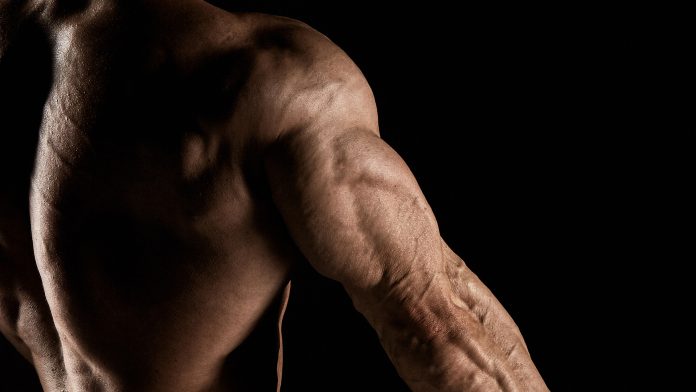
Have Non-Existent Triceps? Use These Horseshoe Building Tricks
Have Non-Existent Triceps? Use These Horseshoe Building Tricks
Triceps and biceps are two sides of the same coin, and yet the tris don’t get the same love as the bis. Training the tris effectively can be trickier as you need to hit the three heads of the triceps as compared to the two bicep heads.
Bodybuilding is a game of illusions and having meaty triceps can make your arms look bigger. A pair of shredded triceps should look like a horse has kicked you in the back of your arm.
The Best Horseshoe Triceps Building Tips
Start With Compound Exercises
Most people make the mistake of starting their tricep workouts with isolation lifts. If you perform exercises like the cable tricep press-downs at the starting of your workouts, you’ll be fatigued by the time you get to the compound moves.
While it might be a good idea to perform the isolation exercises to pre-exhaust your muscles when you’re training the bigger muscle groups (like chest or back), it can have the opposite effect for your tris if you’re fatigued by the time you get to the functional lifts.
Know The Muscle
It’s always a good idea to do some research about the muscles before you start training. The triceps is composed of 67% fast-twitch fibers, so train it according to the adage, “go heavy or go home.”
For the uninitiated – fast-twitch fibers means that you’ll get the best results from your exercises if you keep the TuT (time under tension) short and overload the muscles with heavier weights.
Use Advanced Training Principles
In the sport of bodybuilding, people are always chasing the pump, and in doing so they favor performing a higher number of reps to flush their muscles with lactic acid. Using the advanced training principles while training the fast-twitch muscles can get a little tricky.
If you’ll be using advanced training techniques like supersets, drop-sets in your training, you should make sure you’re using heavier weights (with the right form) and are performing 5-8 reps on each set.
Stretch It Out
By not stretching and posing during the workout, many people leave gains on the table. Not only will stretching improve the muscle pumps, but it will also help establish a better mind-muscle connection.
Holding an overhead tricep pull is one of the most effective tricep stretching moves. Using resistance bands, hitting the bodybuilding tricep poses like the side chest are great ways of flushing the muscles with lactic acid.
Increase The Training Frequency
If your arms are nothing more than small tree branches, you’ll have to put in more effort. We recommend training the muscle twice a week if you have lagging tris. Don’t experiment too much with the exercises and follow the same workout on both the tricep training days in the week.
One of the days should be a single muscle day where you only train your triceps. For the second tricep training day, club your tri workout with bigger muscle groups like the chest or back. Make sure you’re maintaining a balance between training all the three (medial, long, short) heads of the triceps.
How often do you train your calves? Let us know in the comments below. Also, be sure to follow Generation Iron on Facebook and Twitter.
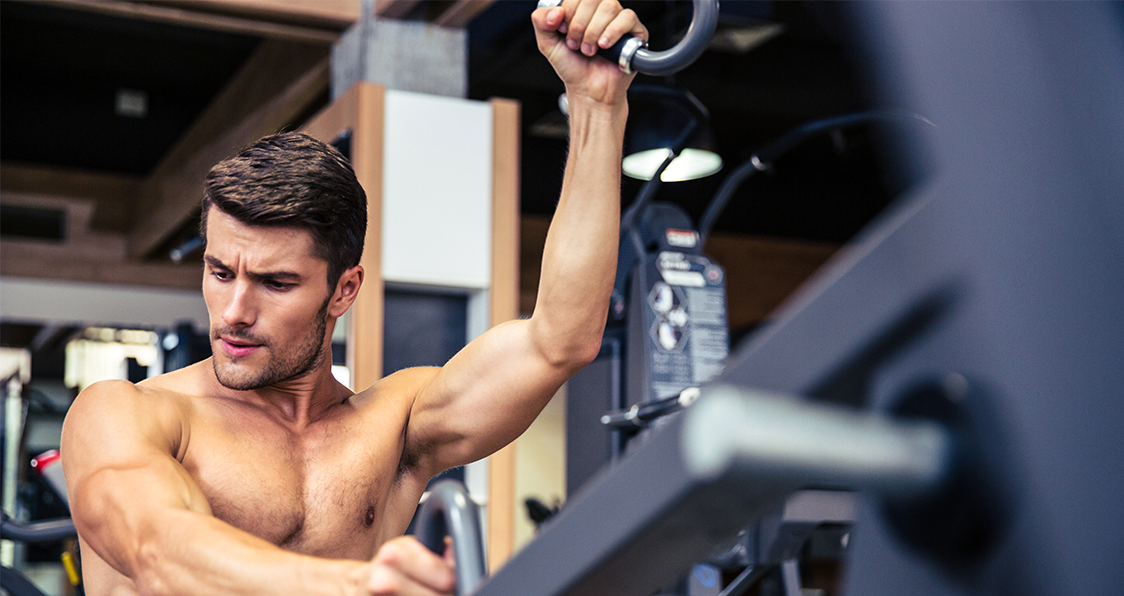
These Machines Are Better Than Free Weights
Use These Machines Rather Than The Free Weights
Machines can be incredibly helpful for some lifters, especially beginners. The machines are a form of isolation (single-joint) exercises that train a single muscle group. While using the free weights has its advantages, there are instances where you’d be better off using the machines.
You should consider using machines instead of performing the compound lifts if you’re recovering from an injury. On days when you feel tenderness or soreness (in a funny way) in your muscles, you should head straight towards the machine station.
Pec Deck Flyes
Many people waste their precious time and energy on performing the dumbbell flyes as they can’t feel any tension on their inner pecs. Establishing a mind-muscle connection can be harder while performing exercises with free weights.
Using the pec deck fly machine can give you a better pump as the range of motion is defined and all you have to do is focus on contracting your pecs with every rep. If you don’t end the exercise with a muscle tearing pump, you should try lowering the weights.
Machine Preacher Curls
Using machines takes away many moving parts from the equation like lifting with the right form, setting an appropriate range of motion, and the scare of hurting oneself if failure is hit during the exercise.
Cutting down these variables makes more space for the most important aspect of bodybuilding – focusing on the muscle under question. The machine preacher curls are a great exercise for training the peak of your biceps.
Lat-Pulldowns
Some people have trouble training their lats optimally. A good back workout should feel as brutal as an annihilating leg workout, if not more. Performing the pulling movements work the lats and build the width in your back.
The only real substitute to the lat pulldowns is the pull-ups. Lat-pulldowns are the perfect substitute for people who can’t perform bodyweight pull-ups or think that bodyweight chin-ups are too easy.
Tricep Cable Pressdowns
In exercises like the dumbbell kickbacks, skullcrushers, or any other free weight lift there are chances of the recruitment of secondary muscles like forearms and shoulders. The cable tricep pressdowns are an isolation exercise and can efficiently target the triceps.
You can get more tension on your triceps by performing the unilateral cable tricep extensions. In the unilateral version, you perform the tricep pressdowns with one arm before switching to the other. The unilateral exercises help in building symmetry and fixing muscle imbalances.
Ab Crunch Machine
Most people make the mistake of not treating their abs like they train all their other body parts. While they do 8-12 repetitions while training other muscles, they resort to doing 25-30 reps while working abs.
Using an ab crunch machine helps by defining a range of motion and gives you the freedom to focus on contracting your abdominal. Machines are better at helping you achieve a muscle pump as they provide the same amount of tension on the muscles throughout the range of motion.
Do you prefer compound or isolation exercises? Let us know in the comments below. Also, be sure to follow Generation Iron on Facebook, Twitter, and Instagram.
*Header image courtesy of Envato Elements
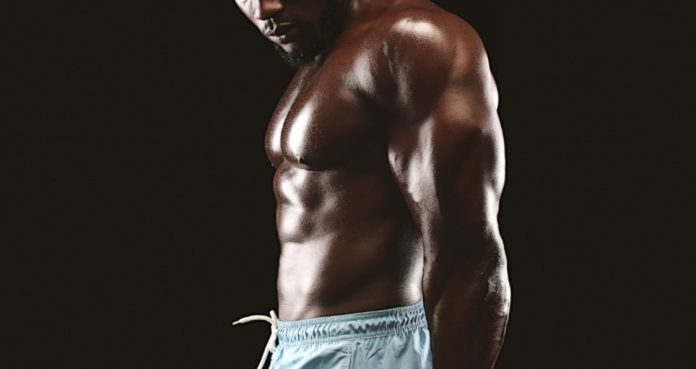
8 Best Triceps Exercises
The Best Exercises For Building Triceps
The triceps are right behind the biceps, but sadly, they get close to the same love as the pythons. Unlike what many people think, building solid horseshoe triceps requires more than doing a few cable extensions.
Your triceps consist of three heads – outer, inner and medial. While the overhead tricep exercises work the inner (longer) head, the push/pressdowns train the outer (shorter) and medial heads. You need to maintain a balance between the exercises to ensure the overall development of your triceps.
Barbell Skullcrushers
Barbell skullcrushers are one of the most effective and underutilized tricep exercises. If you’re a beginner, you should perform the exercise with a spotter. Lie down on a flat bench and grab a barbell with both your hands at shoulder-width.
Extend your arms so they are perpendicular to the floor. While keeping your elbows and upper arms locked in position, lower the bar by flexing at your elbows so the barbell is a couple of inches away from your head. Return to the starting position and repeat for the recommended reps.
Dumbbell Kickbacks
While performing the dumbbell kickbacks your upper body should be at a 60-degree angle with the floor. Grab a pair of dumbbells and get into position by lifting your shoulder slightly and pulling back your elbows.
While keeping your elbow locked in place, bring the dumbbells close to your chest. When the dumbbells are a few inches away from your pecs, push back the dumbbell until your arms are fully extended.
Rope Overhead Cable Extensions
The rope overhead cable extensions work the inner tricep head which can be a stubborn muscle for most people. Place the pully machine at waist height and maintain a full range of motion while performing the exercise.
V-Bar Cable Extensions
Performing the V-bar cable extensions instead of the straight bar can put more emphasis on your outer and medial deltoids. Many people make the mistake of leaning onto the bar while performing the lift. Doing so can recruit secondary muscles and take off tension from your triceps.
Dips
Depending on your stage, you could perform bench or parallel bar dips to bring up the volume in your triceps. You could take your gains to the next level by using additional resistance.
Single-Arm Overhead Dumbbell Extensions
The single-arm overhead dumbbell extensions can take some time to master. While performing the lift, make sure the dumbbell is close to the back of your head at the bottom of the movement and you squeeze the life out of your tris at the top of the ROM.
Close-Grip Smith Machine Bench Press
While many people do perform the close-grip barbell bench press in their tricep training, they leave a lot of gains on the table as they aren’t able to target the tris optimally. The Smith machine close-grip bench press turns the compound movement into isolation lift and keeps your pecs from coming into action.
Reverse Grip Cable Extensions
The reverse grip cable extensions excel at helping you “push-back” your triceps while you’re contracting the muscles at the bottom of the movement. Make the reverse extensions a part of your exercise arsenal if you want your tris to pop.
Which is your favorite tricep exercise? Let us know in the comments below. Also, be sure to follow Generation Iron on Facebook, Twitter, and Instagram.
Header image courtesy of Envato Elements

Why Compound Exercises Are The Best
When it comes to gaining significant amounts of muscle mass we all are recommended to concentrate all our attention and efforts on compounds exercises. In this post we gonna explain why basic exercises are largely performed by almost all bodybuilders, while isolation is left apart. Regardless of the reason you are […]
The post Why Compound Exercises Are The Best appeared first on What Steroids.
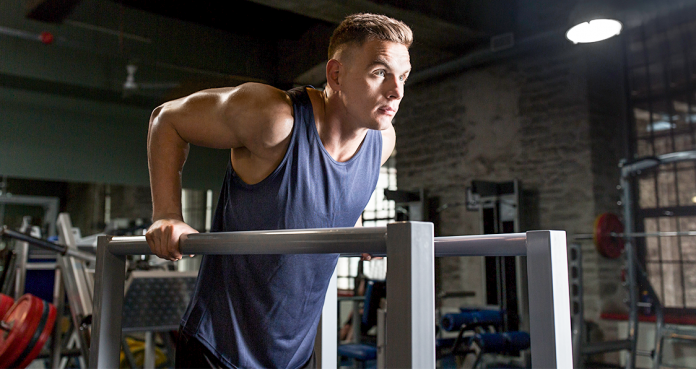
8 Worst Exercises For Building Muscle
The Most Useless Exercises
We recently did an article about the best exercises you could do to build muscle mass. The article got us thinking about the exercises people love doing but which don’t help in budging the needle in the right direction.
Most of the exercises on the list are here because people don’t take out the time to learn the proper form of performing them. You could save yourself time and energy by performing substitute exercises in place of these exercises.
Any Resistance Exercise Done On A Stability Ball
The stability ball came into the limelight with the focus on core training. It’s believed that doing strength training exercises on an unstable surface is going to build muscle and core strength, but no studies have been able to prove it.
Performing exercises involving additional weights are safer done on the floor than using an unstable surface. There is a reason why football games are played with athletes standing on a field of some type, and not a ball or moving surface. To be a pro, train like one.
Ab/Oblique Rotation Machine
Many gyms have a machine that has a revolving base which can be used to train the abs and obliques. People need to stand/sit on it and twist their torsos to train the midriffs. Some people take it to the next level by using weights on the base to add resistance.
The basics of biomechanics state that you need to avoid moving through the terrible triad of lower back movements: simultaneous flexion, rotation, and side bending, especially under loading. Reading just this one line about biomechanics should be enough to make you stop using the rotation machine.
Dips
Although the dips are a great tricep exercise, many people don’t get anything out of it because they can’t establish a mind-muscle connection with the muscle, and can feel no contraction.
Romanian Deadlifts
It’s harder to train the posterior muscles as you can’t see them in the mirror directly. To perform the RDLs correctly you need the right amount of range of motion and bend in your knees which is sometimes too much to ask off a beginner.
Lat Pulldowns
Many people make the mistake of using momentum by swinging back and forth while performing the lat pulldowns. Using the jerking motion takes off tension from your back and puts it on your arms and shoulders.
Upright Rows
The uprights rows need the strictest of forms to optimally work the traps. If you use weights that are too heavy and need to swing back and forth to lift them, you’ll end up performing a weird variation of overhand barbell curls.
Tricep Kickbacks
Even though bis and tris are antagonistic muscles, the triceps don’t get the same love as the pythons. Elevation of your elbow, shoulder, the bend in your back, the distance between your feet, there are too many variables connected with performing the tricep kickbacks correctly.
Lunges
Only a few people perform the lunges correctly. The others either don’t take long enough steps, lunge too shallow, bend at the back or lose their balance. The lunges are best left to the pros.
Which exercise do you hate the most? Let us know in the comments below. Also, be sure to follow Generation Iron on Facebook, Twitter, and Instagram.
Header image courtesy of Envato Elements
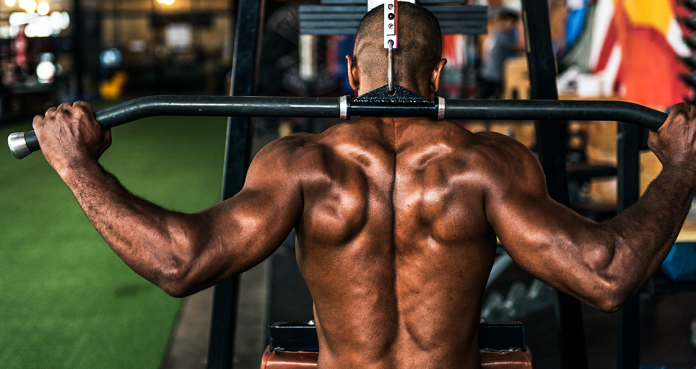
These Are The 7 Most Important Lifts
The Best Seven Exercises You Can Do In The Gym
No two exercises are created equal. In this article, we won’t be getting into the argument if compound lifts are better than the isolation movements. We believe each has its place in your exercise arsenal.
If you’re like most people, you’ll want to make the most of your time in the gym. And how do you do that, you ask? It’s easy, you perform the exercises which are going to give you the best bang for your buck.
Squats
There are no surprises here. Squats are one of the best functional lifts which can add size to your legs and help you in building overall strength. If you have a back injury or can’t perform the barbell squats for some reason, you can try variations like the goblet or hack squats.
Make sure you’re focusing on contracting your muscles with each rep in all of the exercises you perform. Just going through the motions for the sake of it isn’t going to do much for you. Establishing a mind-muscle connection is key to building muscle mass.
Incline Dumbbell Bench Press
For many people, the upper pecs are a weak muscle group. Following a full ROM (range of motion) while performing the incline bench press can help in developing the stubborn muscle group.
If you perform these exercises in your HIIT workouts, 12-15 repetitions will be the optimal rep range. Keep your ego in check and focus on the form rather than the amount of weight on the bar.
EZ-Bar Skullcrushers
The skullcrushers are one of the most effective tricep exercises. Lie down on a flat bench with an EZ-bar in your hands extended at arm’s length so your upper arms are perpendicular to the floor at the starting position.
You need to keep your elbows and upper arms locked in the same place throughout the exercise. The bar should be a couple of inches away from your forehead at the bottom of the movement.
Squats are a must in your training program
Arnold Presses
While most shoulder exercises target a single deltoid out of the three heads, the Arnold presses work the anterior and medial delts. Performing the Arnold presses while sitting on an army bench eliminates the possibility of using momentum.
Deadlifts
Deadlifts are a full-body exercise that primarily targets the back. Performing the compound exercises regularly can improve your mobility, strength, and can help you in doing your day-to-day tasks.
Machine Preacher Curls
While most people love performing the dumbbell curls, they can’t get the most out of them as they lack the mind-muscle connection. Machine preacher curls are an isolation exercise that targets the peak of your biceps.
Hanging Leg Raises
Most people who workout want washboard abs but don’t know how to achieve them. After you have your diet in place, performing exercises like the hanging leg raises will help you bring the definition and symmetry in your abs.
Which is your favorite exercise? Let us know in the comments below. Also, be sure to follow Generation Iron on Facebook, Twitter, and Instagram.
Header image courtesy of Envato Elements
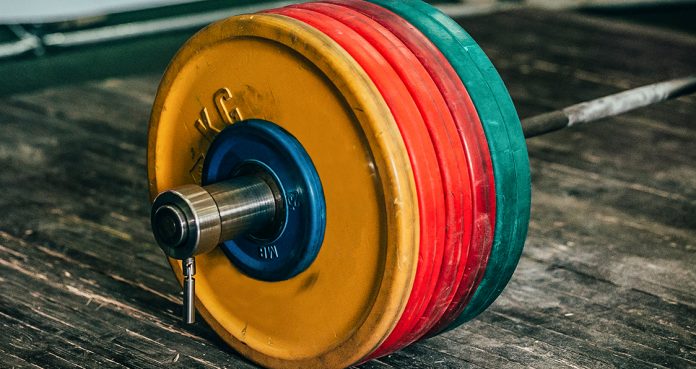
5 Landmine Exercises For A Shredded Body
The Best Landmine Exercises
Landmines are one of the most underrated exercises. You could perform the landmines as a compound or unilateral lift to fix your strength or muscles imbalances. There is a variation of the landmines you can perform to train every muscle group.
The landmine exercises force you to use your muscle stabilizers which can help strengthen your core. In a landmine exercise, you place one end of a barbell in a corner where it doesn’t move or use a T-bar machine.
Landmine 180s
If you know about the landmine exercises, it’s probably because of the 180s. The 180s are arguably the most popular landmine exercise. 180s work your obliques and core and will set them on fire. Get in position by standing with a shoulder-width stance.
Extend your arms forward and grab the end of the barbell with both your hands. Your hands should be in front of your face at the starting position. Take a deep breath and rotate to the right side until the end of the barbell is at your waist level. Return to the starting position while breathing out and repeat on the left side.
Landmine Squats
If you’re someone who has back problems and can’t perform the orthodox squats with the barbell on your back, the landmines squats are a lifesaver for you. The landmine squats take off all the tension from your back and put them on your quads.
Stand with a shoulder-width stance and grab one end of the barbell with both your hands. Bend your arms at your elbows and place your hands in front of your chest. Inhale and perform a squat. Return to the starting position while breathing out. Repeat for recommended reps.
Single-Arm Bent Over Landmine Rows
Performing the bent-over rows on a landmine setup can turn the compound exercise into an isolation lift. You can perform the single-arm bent over landmine rows with your body parallel or perpendicular to the barbell.
Both the variations will give the barbell a different movement pattern and target your back uniquely. Make sure you’re not just going through the motions. Hold and contracts your muscles at the top of movement while performing each exercise.
Landmine Shoulder Press
Landmine presses are a killer shoulder exercise. You should make the exercise a part of your arsenal if you want to see some insane results. Most people make the mistake of using momentum by pushing through their legs while performing the landmine presses.
You need to keep a strict form to get the most out of this exercise. The jerking motions can reduce the tension on your shoulders and divert it to secondary muscles like your arms and legs.
Single-Leg Landmine Romanian Deadlifts
The single-leg landmine Romanian deadlifts might be one of the hardest compound exercises to perform. The main objective of the landmine RDLs is to put tension on your stationary leg while getting the maximum height with your back leg.
You don’t need to worry too much about touching the floor with the barbell. Stand perpendicular to the barbell (this will give you a similar feeling as the dumbbell RDLs) and place your feet right behind the end of the barbell. You should use your free arm to balance yourself without obsessing over which side your arm should point towards.
Have you ever tried one of these exercises? Let us know in the comments below. Also, be sure to follow Generation Iron on Facebook, Twitter, and Instagram.
Header image courtesy of Envato Elements
